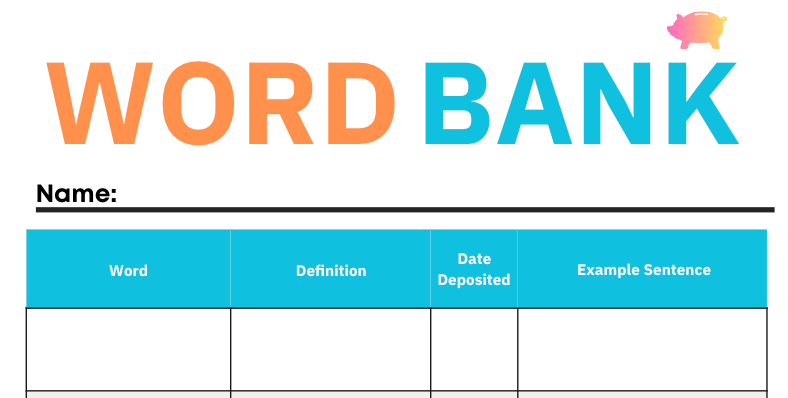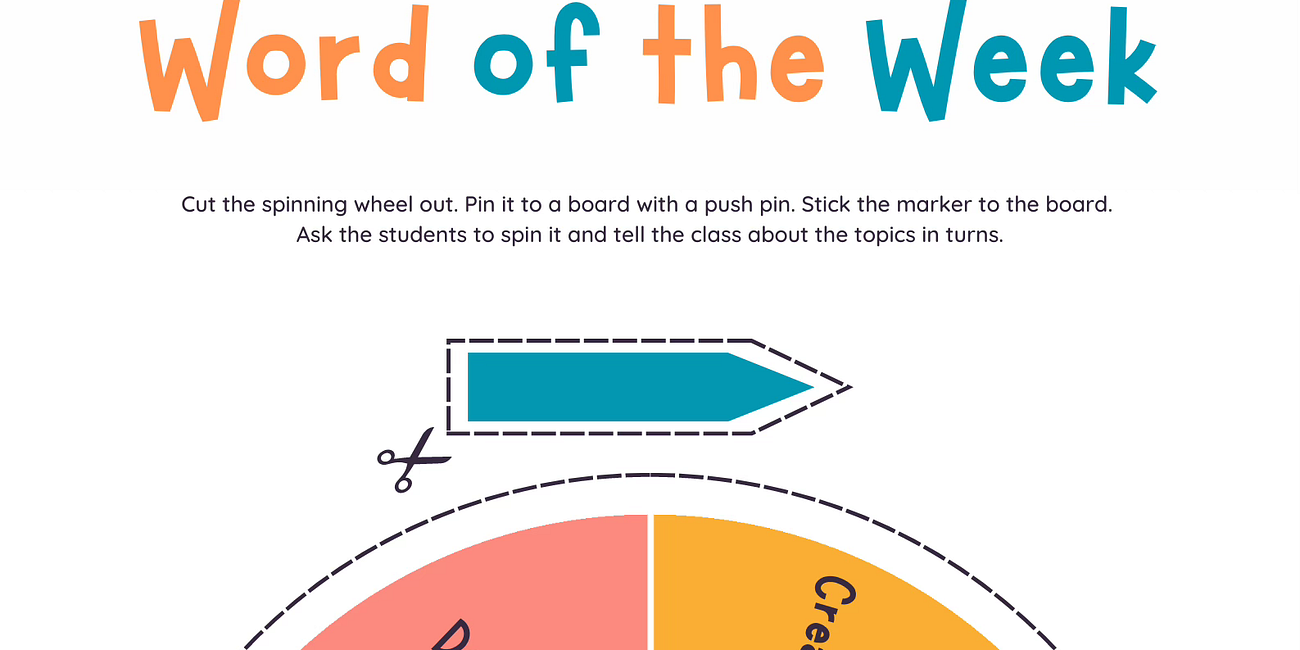Why Building a Personal Word Bank Matters
Free Resource

In some classrooms, vocabulary is still approached passively—highlighted in a reading, briefly explained, and then set aside. However, both research and classroom experience suggest this approach is insufficient. Vocabulary acquisition requires deliberate, repeated, and contextualised engagement. For English language learners, in particular, developing a broad and usable vocabulary is essential not only for academic achievement but also for confident, meaningful communication across settings.
The Role of Vocabulary in Language Learning
Vocabulary underpins every aspect of language development. Without sufficient word knowledge, learners struggle to comprehend texts, follow classroom discussions, express themselves in writing, and participate fully in conversation. In fact, vocabulary size is frequently identified as one of the strongest predictors of reading comprehension and overall academic success (Clenton & Fraser, 2021).
The Bell Foundation describes vocabulary as “a key predictor of success” and notes that students with a limited working vocabulary are at greater risk of falling behind, particularly as curriculum content becomes more abstract and subject-specific.
Importantly, effective vocabulary acquisition involves more than memorisation. Learners need multiple, meaningful exposures to words across different contexts. Repetition, usage, and personal relevance are critical factors in helping students internalise new language.
The Value of Personal Word Banks
One highly effective yet low-cost strategy is the use of a personal word bank. This may take the form of a vocabulary notebook, a shared digital document, a voice note collection, or an app. The key idea is to support students in actively recording and organising the words they encounter.
Personal word banks offer several advantages:
Active engagement: Students make choices about which words are important to them and how to record them.
Deeper processing: Writing definitions, example sentences, or drawing visuals enhances understanding.
Ownership: The word bank becomes a learner-driven resource rather than a teacher-imposed list.
Metacognition: Learners become more aware of their language development and areas requiring further review.
The Bell Foundation recommends that students include definitions, example sentences, subject-specific contexts, and bilingual equivalents where useful. This method encourages learners to make connections between vocabulary, classroom content, and real-world use.
Download Free Word Bank Resource
This is an easy way for students to store newly acquired vocabulary. Simply print these off and keep them available in your classroom at all times.
Tools and Routines That Support Vocabulary Growth
To be effective, vocabulary strategies need to be embedded into classroom routines and supported consistently. A few recommended approaches include:
Weekly review activities: Ask students to select words from their word banks and use them in a short paragraph, dialogue, or creative piece.
Quizlet: Encourage students to create their own digital flashcard sets, or develop shared class decks. The built-in games and revision tools support regular retrieval practice.
Collaborative Padlets: Use shared boards for students to post new words, “Word of the Week” entries, or examples of vocabulary in use.
Word of the Week: Highlight a high-utility or subject-specific word in class, explore its meaning and usage together, and challenge students to apply it in different contexts.
Word Walls: Maintain a physical or digital display of current vocabulary. Group words by topic or function and update them regularly with student contributions.
Cross-curricular reinforcement: Encourage teachers across subjects to prompt students to refer to and update their personal word banks when encountering key terms.
When these tools and strategies are used consistently, vocabulary learning becomes more visible, purposeful, and engaging for learners.
Final Reflections
Vocabulary acquisition plays a critical role in the academic and communicative development of English language learners. While apps and lists can be useful, it is the structured, active, and personalised work of building a vocabulary bank that often has the most lasting impact. Supporting students to take ownership of their language development in this way builds confidence, promotes metacognitive awareness, and lays the foundation for long-term success.
📚 Further Reading
Bell Foundation. (n.d.). Building Vocabulary: Great Ideas. Retrieved from: https://www.bell-foundation.org.uk/resources/great-ideas/building-vocabulary/
Clenton, J., & Fraser, S. (2021). The Role of Vocabulary in EAL Reading Comprehension. ERIC.
Conti, G. (2025). What Really Matters in Vocabulary Acquisition? A Ranked Analysis of Key Influencing Factors.
Spinning into Vocabulary: Using the Word Wheel to Engage Students
·Building vocabulary is a key part of language learning, but it can sometimes feel repetitive. To make it more dynamic, I introduced a Word Wheel into my classroom. This interactive tool allows studen…
Support and Stay Connected
Although I create and share these resources freely, there are ways to support if you find value in them:
👉 Take out a paid subscription on Substack to support future work
🤝 Share this post with colleagues and teaching communities
📲 Tag me on Instagram @fletchucation or visit mtfletcher.com
🗣️ Let me know how you’re using it in your classroom—I’d love to hear from you




